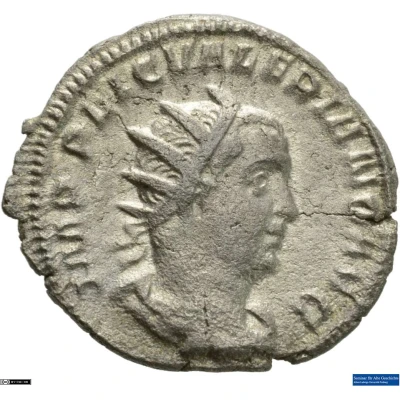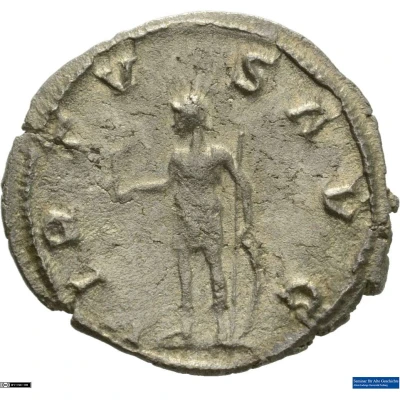Antoninianus - Valerianus VICTORIA GERMANICA; Victory
| Silver | - | - |
| Issuer | Rome › Roman Empire (27 BC - 395 AD) |
|---|---|
| Emperor | Valerian (Publius Licinius Valerianus) (253-260) Gallienus (Publius Licinius Egnatius Gallienus) (253-268) |
| Type | Standard circulation coin |
| Years | 257-259 |
| Value | Antoninianus (1) |
| Currency | Antoninianus, Reform of Caracalla (AD 215 – 301) |
| Composition | Silver |
| Shape | Round (irregular) |
| Technique | Hammered |
| Demonetized | Yes |
| Updated | 2024-10-05 |
| Numista | N#286179 |
|---|---|
| Rarity index | 100% |
Reverse
Victory, winged, draped, standing left, resting right hand on shield and holding palm in left hand; at her feet, captive.
Script: Latin
Lettering: VICTORIA GERMANICA
Translation:
Victoria Germanica.
Victory over the Germans.
Comment
Source:Online Coins of the Roman Empire (OCRE)
Interesting fact
The Antoninianus coin was introduced during the reign of Emperor Valerian (253-260 AD) as a replacement for the denarius, which had been the standard Roman silver coin for centuries. The Antoninianus was made of silver, but it was smaller and lighter than the denarius, with a lower silver content. Despite its lower value, the Antoninianus was still widely accepted as a form of payment throughout the Roman Empire. In fact, it remained in circulation for over a century, until the reign of Emperor Diocletian (284-305 AD), who introduced a new system of coinage. The fact that the Antoninianus coin was introduced during a time of economic turmoil and yet remained in circulation for over a century speaks to its significance in the history of Roman currency. It's a testament to the adaptability and resilience of the Roman Empire's monetary system, and it's a fascinating example of how currency can shape and reflect the economic and political landscape of a society.

